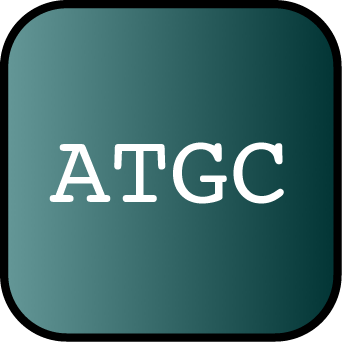Difference between revisions of "Plasmid backbones/Other standards"
| Line 42: | Line 42: | ||
#Anderson pmid=16330045 | #Anderson pmid=16330045 | ||
</biblio> | </biblio> | ||
| + | |||
==Other miscellaneous vectors== | ==Other miscellaneous vectors== | ||
The Registry also have miscellaneous other plasmids and plasmids backbones. These plasmids and plasmid backbones have not undergone Registry curation, but we include them here for completeness. | The Registry also have miscellaneous other plasmids and plasmids backbones. These plasmids and plasmid backbones have not undergone Registry curation, but we include them here for completeness. | ||
Revision as of 19:12, 28 September 2008
| Part assembly | System operation | Protein expression | Assembly of protein fusions | Part measurement | Screening of part libraries | Building BioBrick vectors | DNA synthesis | Other standards | Archive |
| Or get some help on plasmid backbones. |
Plasmids used in DNA synthesis of BioBrick® parts
Most DNA synthesis companies do not currently use BioBrick® plasmid backbones to clone synthesized BioBrick® parts. Therefore, some parts in the Registry are available in non-standard plasmid backbones because they were constructed via direct DNA synthesis. Here is a list of plasmid backbones used by assorted DNA synthesis companies.
| Name | Description | Resistance | Replicon | Copy number | Chassis | Length |
|---|---|---|---|---|---|---|
| BBa_J70003 | Geneart Cloning Plasmid pGA4 | A | 2961 | |||
| BBa_J70004 | BioBasic Cloning Plasmid pUC57 | A | 2710 | |||
| BBa_J70022 | GENEART pGA4 plasmid | 2978 | ||||
| BBa_K2812001 | Coding sequence for trunctated Lysostaphin | 738 | ||||
| BBa_K2812003 | Coding sequence for trunctated Lysostaphin regulated by T7-promoter | 776 | ||||
| BBa_K2812004 | Coding sequence for trunctated Lysostaphin fused to His-tagged HlyA | 1458 | ||||
| BBa_K2812005 | Coding sequence for trunctated Lysostaphin with HlyA and His6-tag regulated by T7-promoter | 1496 | ||||
| BBa_K2812006 | Coding sequence for Pyocin S5 with HlyA and His6-tag | 2217 | ||||
| BBa_K2812007 | Coding sequence for Pyocin S5 with HlyA and His6-tag regulated by pBAD-ara promoter | 2288 | ||||
| BBa_K5293014 | pHREAC_eGFP_ER | 10477 | ||||
| pSB1A1 | pUC19 with a BioBrick cloning site (Replaced by pSB1A3) | A | pMB1 | 500-700 | 2708 |
Berkeley assembly standard plasmid backbones
Researchers at UC Berkeley have developed a new assembly standard. See [http://openwetware.org/wiki/The_BioBricks_Foundation:Standards/Technical/Formats#The_Berkeley_.28BBb.29_Format the BioBricks Foundation wiki] for more details.
There are no parts for this table
SynBERC Tumor killing bacteria testbed
One of the testbeds for the NSF-funded [http://synberc.org Synthetic Biology Engineering Research Center (SynBERC)] is designing and engineering modules that will be integrated to construct a bacterium capable of moving to and attacking a chemical or biological entity; for example, a tumor or a chemical warfare agent. There are a number of environmental cues that bacteria could use to distinguish a tumor from healthy tissue. The environment is hypoxic and more nutritious, and bacteria grow to significantly higher cell densities (Yu et al., 2003). Components that sense these differences can be linked to genetic circuits that integrate the information. The circuits will activate engineered pathways that control bacterial chemotaxis and the interaction between the bacterium and a mammalian cell. These systems will be engineered into a non-pathogenic E. coli chassis.
| Name | Description | Resistance | Copy Number | Origin | Length | Default Insert | PCR |
|---|---|---|---|---|---|---|---|
| BBa_J61004 | pAC-TetInv | 5559 | |||||
| BBa_J61005 | pAC-LuxInv | 7181 | |||||
| BBa_J61006 | pBACr-AraInv | 10830 | |||||
| BBa_J61008 | pBACr-FdhInv | 9764 | |||||
| BBa_J61009 | pAC-LuxGFP | C | p15A | 5130 | p15A | p15A |
| Chris Anderson, an assistant professor of bioengineering at UC Berekeley and the SynBERC testbed leader, has submitted a set of plasmids associated with his paper on Environmentally Controlled Invasion of Cancer Cells by Engineered Bacteria. Please read the paper for details or contact Chris for details. |
<biblio>
- Anderson pmid=16330045
</biblio>
Other miscellaneous vectors
The Registry also have miscellaneous other plasmids and plasmids backbones. These plasmids and plasmid backbones have not undergone Registry curation, but we include them here for completeness.












